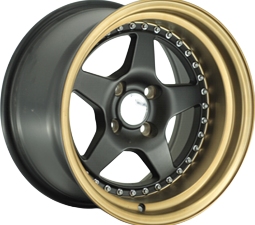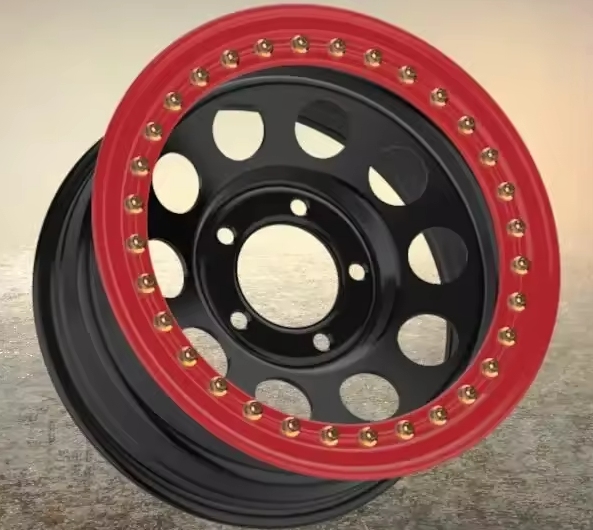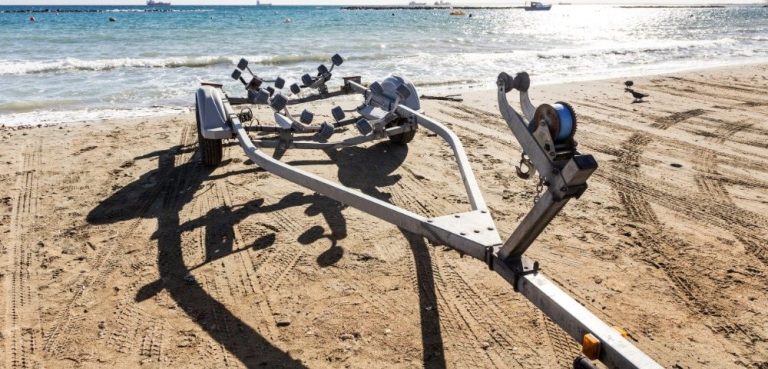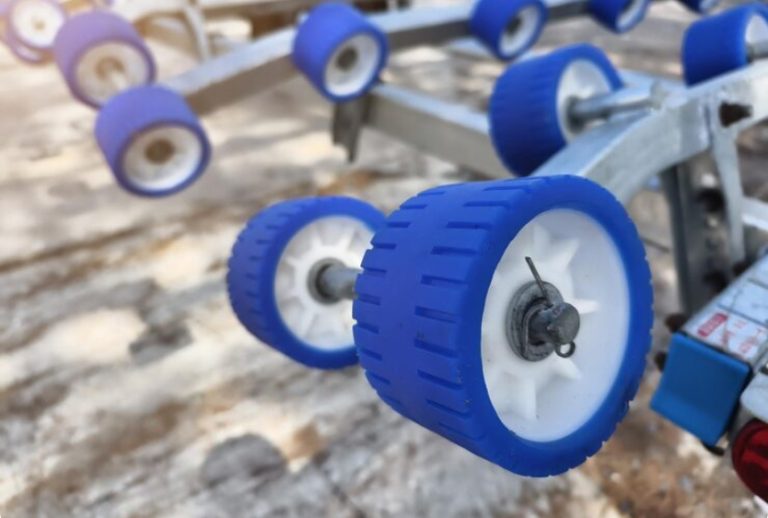Knowing how to measure the size of trailer leaf springs is crucial for trailer owners who are dealing with worn-out springs or preparing to have replacements on standby as accurate measurements are key in this process. This detailed guide will walk you through the steps required to measure trailer leaf springs.
Understanding Trailer Leaf Springs
Before you start, it’s helpful to understand what trailer leaf springs are and how they work, as this will make measuring much easier.
Parts of a Trailer Leaf Spring
Trailer leaf springs are made up of parts that work together to fulfill their purpose; understanding the function of each component helps in evaluating the springs.
Center Pin
The main pin plays a role in maintaining the connection between all the leaves and is located in the middle of the leaf spring, allowing the spring to flex when the trailer moves over different surfaces.
Eyes/Slippers
The bends or extensions, at the tips of the springs, called eyes or loops, are used to attach the springs to the trailer’s axle.
Springs/Leaves
The leaves of the suspension system lie above or below the axle to cushion road imperfections and ensure a journey by bearing the weight of the trailer and maintaining its balance.
Measuring Trailer Leaf Springs
Ensuring that you take measurements of your trailer’s leaf springs is essential for choosing the right ones to keep your trailer operating efficiently and safely.
Preparing for Measurement
To ensure measurements, make sure your trailer is prepared before starting.
Lift your trailer with jack stands to allow the axle to hang unrestrictedly.
Be sure to unload the trailer before taking any measurements, as the weight of the load could affect the results.
Ensure that when replacing leaf springs, do so in pairs to ensure wear and consistent maintenance of the ride height.
Measuring Leaf Spring Flat Length
The term “length” denotes the length of the spring when it is fully extended in its flattened state, and this method continues to be useful even if your springs exhibit indications of wear or drooping.
Measuring Flat Length for Double-Eye Springs
When determining the size of a double-eye spring;
Measure the distance by starting at the center of the bolt and going toward the center of one eye.
Check the bolts’ measurements to ensure they align correctly on the side.
Measuring Flat Length for Slipper Springs
To measure the flat length of a slipper spring:
Begin by measuring the distance between the center of the bolt and the center of the eyelet.
Measure from the center of the bolt to the tip of the slipper.
Measuring Eye-to-Eye/Eye-to-Slipper
This method provides a way to evaluate things. Might not be as accurate when handling springs.
The Eye-to-Eye Method
To measure the eye-to-eye length:
To find out how apart the center of each eye is, begin by measuring from one eye’s center to the other eye’s center.
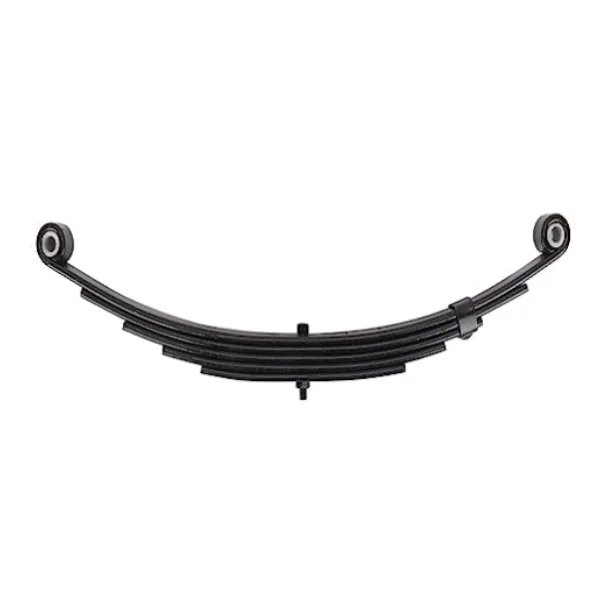
The Eye-to-Slipper Method
To measure the eye-to-slipper length:
Begin at the center of the eye. Then measure from that point to the tip of the spring where the slipper is situated.
Measuring Leaf Spring Width
One other important factor to keep in mind is the evaluation of the breadth of the leaf spring.
Measure across the top of the top leaf.
Measuring Leaf Spring Height
It’s important to measure the height of the spring to see if they are beginning to droop.
Begin by locating the point of the center pin, then measure vertically to where the eye or slipper mechanism is positioned.
To try this out: Turn the leaf spring down, on a flat surface and then measure from the ground to the center pin.
GO Trailer: Your Reliable Trailer Spring Supplier
GO Trailer is a company based in Qingdao City, situated in Shandong province, China, that focuses on producing trailer components. Specifically, trailer leaf springs can be found at GO Trailer and may serve as a choice for your buying needs.
Manufacturing Expertise
The trailer company highlights its use of engineers and automated machinery in its production process to showcase its proficiency in crafting high-quality trailer parts, like axles, springs, couplers, jockey wheels, and winches.
Global Reach
GO Trailer mainly partners with wholesalers and distributors as suppliers of trailer components. Works with clients across the United States, Australia, and several countries in Europe and elsewhere around the globe.
FAQs
What should I do if one of my springs breaks?
It’s an idea to replace both leaf springs together even if only one is damaged, as it’s likely that the other spring has also worn out due to wear and tear over time.
What else do I need to know before purchasing new leaf springs?
Before you buy leaf springs for your vehicle trailer or camper van, it’s important to know the axle’s weight capacity to make sure it matches the suspension system and safety standards of your vehicle model. “If you’re unable to find the axle capacity details on the manufacturer’s sticker or plate affixed to your trailer chassis – a location for this information on such vehicles – you could also consult the owner’s manual that accompanies your trailer model or reach out directly to the manufacturer for help.”
How can I tell if I need to replace my leaf springs?
Perhaps it might be worth thinking about replacing your leaf springs if you start noticing these signs.
The appearance of cracks in the leaves indicates that the spring’s structural integrity is compromised and needs to be replaced.
The drooping or tilting of the trailer indicates that the springs are no longer giving support and are probably worn out or damaged.
When leaf springs are worn out or damaged, it might make your ride less smooth since they won’t be able to absorb bumps on the road as well as they should.
Why should I replace leaf springs in pairs?
When you’re fixing your trailer, it’s an idea to replace both leaf springs together to keep it balanced and distribute weight evenly as needed for proper functionality. Just changing one spring could cause variations in the arch and load-carrying capacity between the old springs, potentially causing the trailer to lean on one side. This imbalance might lead to tire wear and make driving less stable with potential safety concerns.
What is the difference between double-eye and slipper springs?
Eye-to-eye springs have eyes at both ends, for attaching them to the trailer axle using bolts or shackles; on the other hand, slipper springs feature an eye at one end. A slipper end with a curved surface that slides along a mounting bracket connected to the trailer frame structure. Choosing between eye and slipper springs depends on how your trailer’s suspension system is set up.



